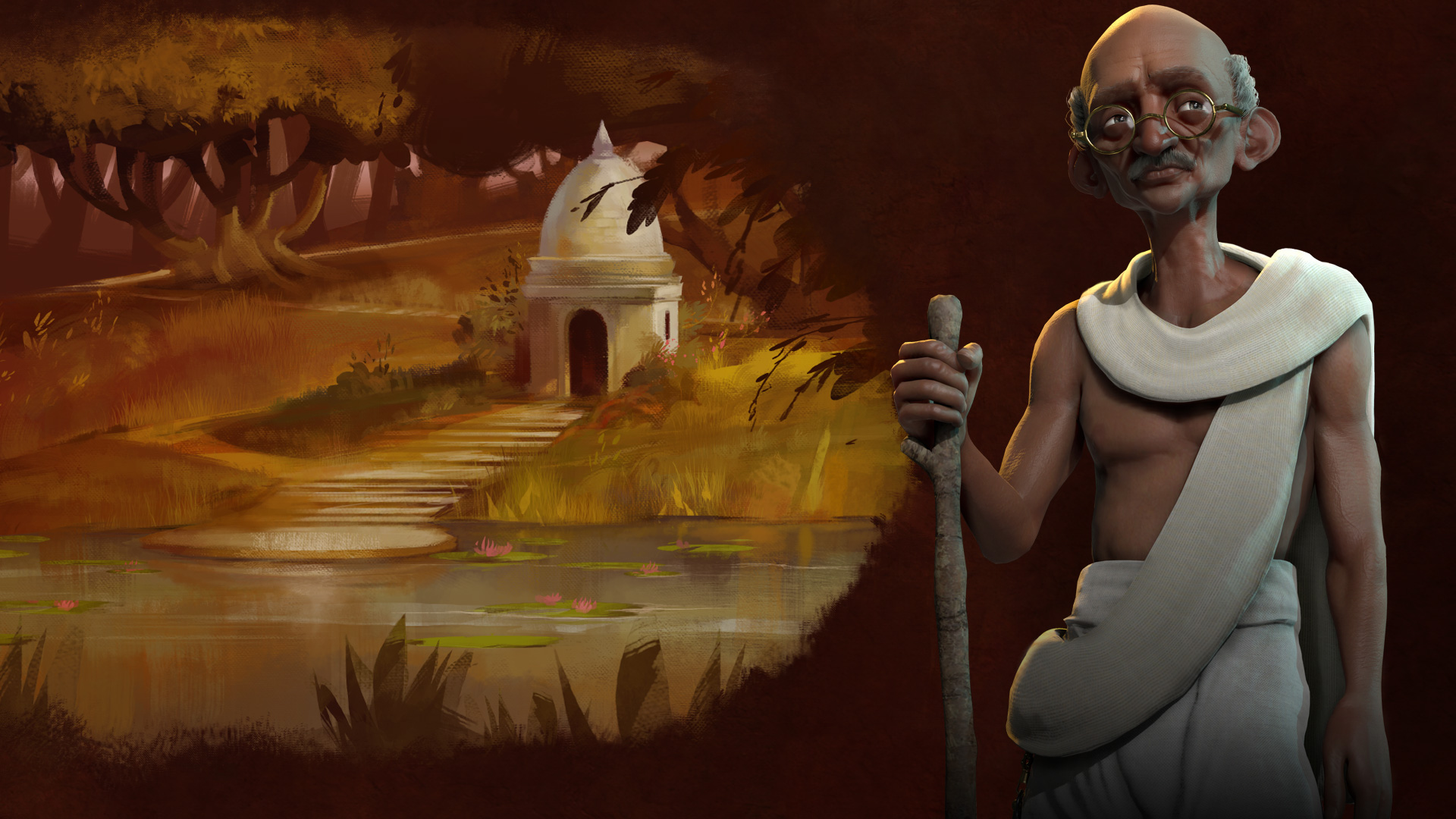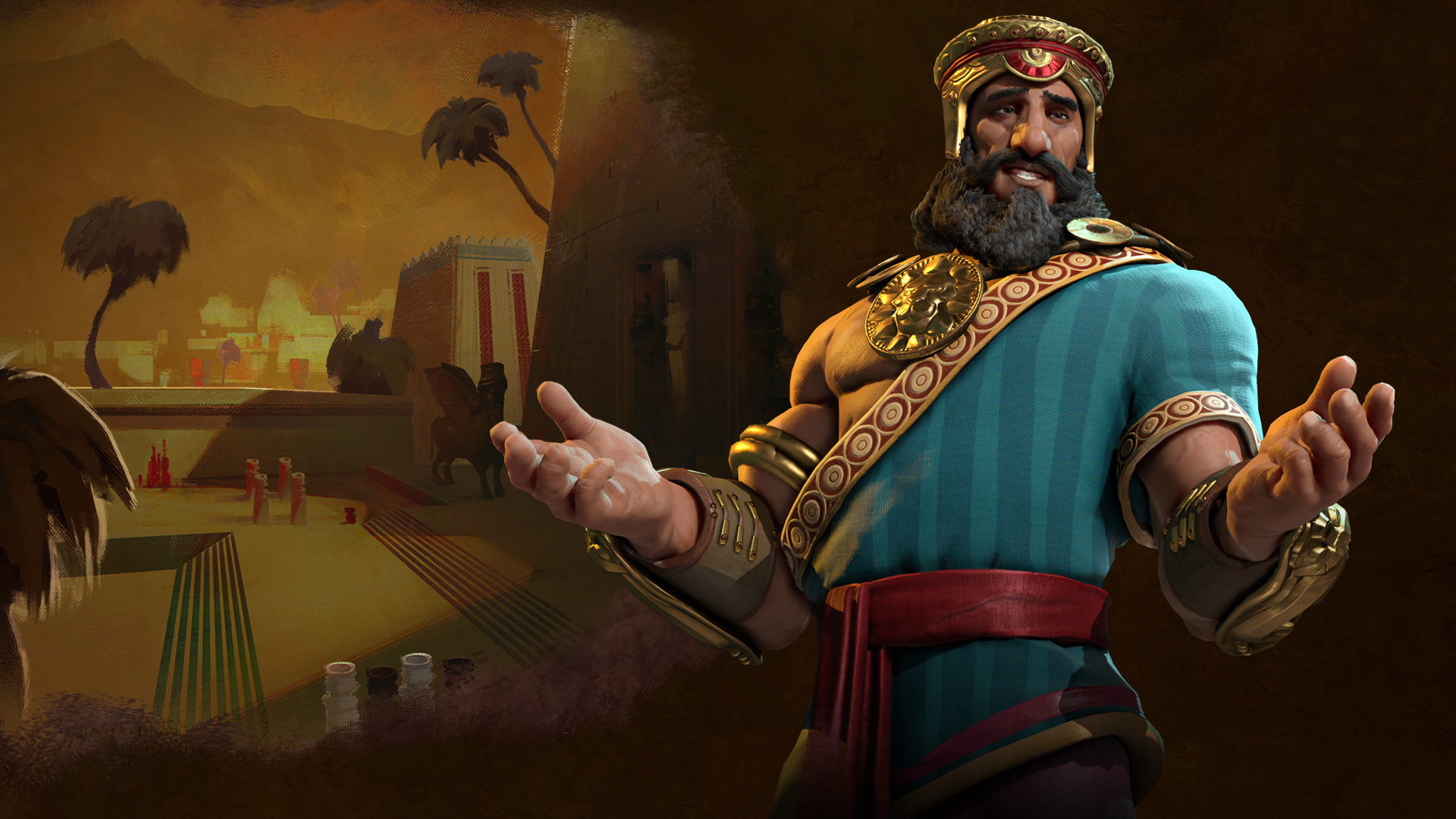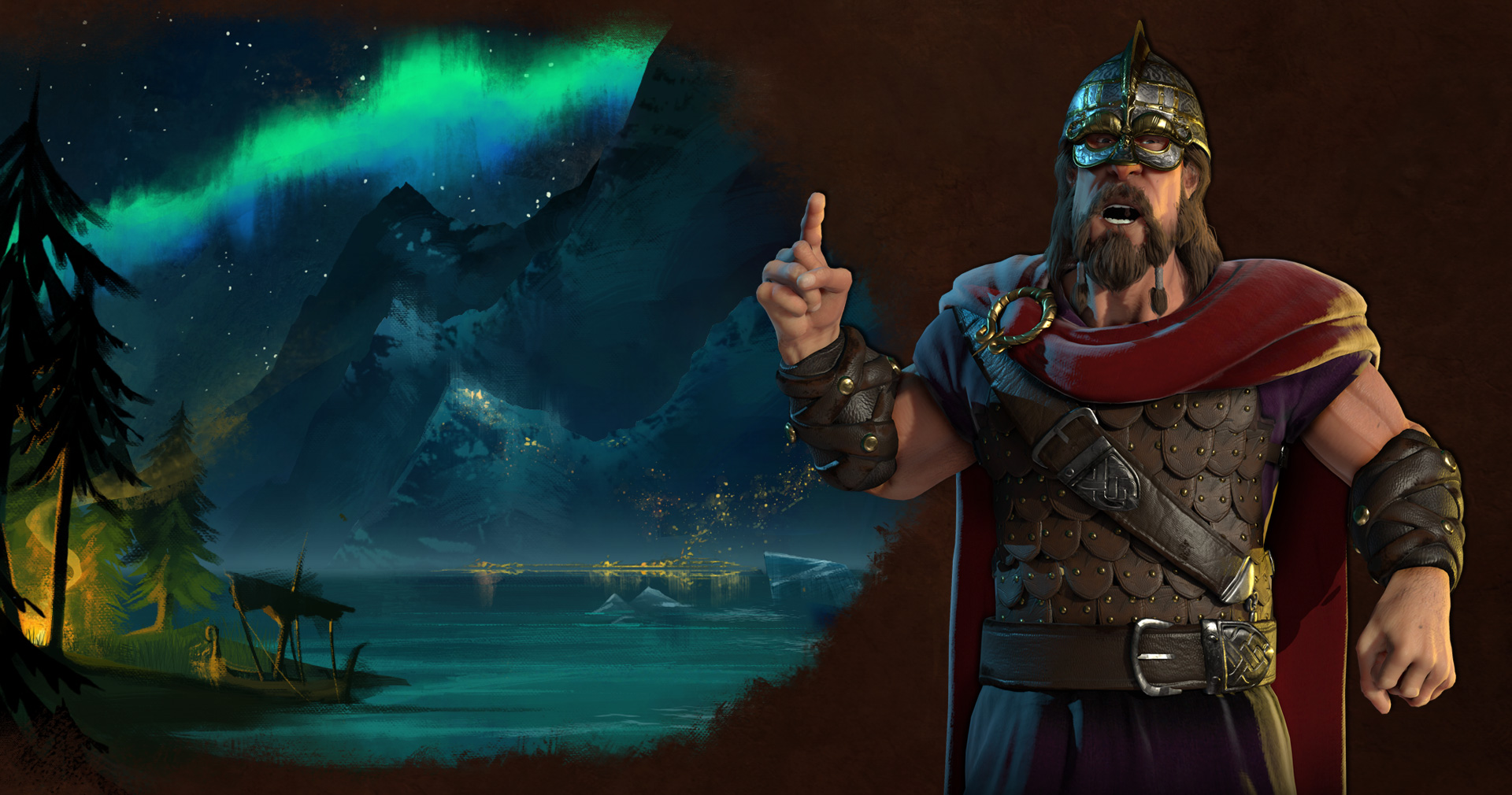FRANCE / EGYPT / GERMANY • INDIA / SUMERIA / NORWAY • JAPAN / AZTECS / KONGO • BRAZIL / GREECE / SPAIN • CHINA / ARABIA / AMERICA • SCYTHIA / ROME / ENGLAND / RUSSIA
MOHANDAS GANDHI (INDIA)
Bonuses
- Bonus Faith for every civ you’ve met who has founded a religion, and with whom you are not at war (reflecting the religious diversity of the Indian subcontinent)
- Varu War Elephants: Specialized melee cavalry that reduce enemy combat strength for each unit of this type adjacent to them.
- Stepwell improvement: Available very early, granting housing and food, as well as additional bonus resources based on what it’s placed next to.
Who was he?
Would you be at all surprised at this point if I were to tell you that Gandhi was never the leader of India? Perhaps best known to long-time civ players as a nuke-happy, warmongering maniac, he was in actuality an important political and ideological figure in the movement for Indian independence from the British Empire. While he made highly effective use of nonviolent resistance and is associated with pacifism, he actually once said “...we adopted [nonviolence] out of our helplessness. If we had the atom bomb, we would have used it against the British.”
Strategies
Stepwells will allow your cities to grow and prosper much faster than most other civs in the early game, representing how the Indus Valley was one of the first places to see large, agricultural civilization flourish. This early lead can be taken in many directions, but the potency of war elephants (possibly the best early military unit overall if used correctly) suggests some initial aggression is advisable. Eventually, though, you’ll want to settle down and make friends to take advantage of Gandhi’s faith bonus.
GILGAMESH (SUMERIA)
Bonuses
- Military units share in pillaged resources and XP gained by any allied unit fighting within five tiles
- Doesn’t get warmonger penalties for declaring war on a civ one of his allies is already at war with
- Gets bonus rewards for conquering barbarians (falling in line with their place in history as one of the first, true civilizations)
- War Cart: An early game chariot that doesn’t suffer the normal penalties against spearmen
- Ziggurat: A temple that grants science and culture if adjacent to a river
Who was he?
Gil (Do you mind if I call you Gil?) was—you guessed it!—not the leader of Sumeria. At least, we can’t be sure he was. There is some evidence of a king of a particular Sumerian city-state with that name, but far more famous (and the basis for Civ 6’s portrayal) is the mythological Gilgamesh from the Epic of Gilgamesh, the oldest heroic poem in human history. It actually holds up even today as an exciting adventure story if you can get your hands on it, but its more fantastical elements make Gil an odd choice for a Civ leader. It would be kind of like if the US was led by Optimus Prime.
Strategies
Sumeria’s natural playstyle is kind of like my average Saturday night: get some friends together and go on a screaming rampage. You’ll make a great ally in the early game with an excellent all-around military unit available from turn one. It’s dangerous to go alone, and you will only benefit from bringing comrades along to the fight. Ziggurats can also help you get an early start on a culture or science victory, which is appropriate considering the Sumerians kinda invented written records.
HARALD HARDRADA (NORWAY)
Bonuses
- Melee naval units can pillage coastal land tiles, so no seaside burgh or monastery is safe
- Land units pay no movement cost to embark or disembark, and can gain the ability to cross deep ocean much earlier in the tech tree than those of other civs
- Berserker: Medieval infantry that can pillage tiles with less movement cost and gains bonuses when attacking, but penalties when defending
- Viking Longship: Melee naval unit that can hunker down and heal in friendly or neutral territory
- Stave Church: A holy district that grants bonus faith for adjacent forest tiles
Who was he?
King of Norway (for real this time!) during the turbulent 11th century, Harald 'Hard-ruler' was a Christian, though is often said to have still embodied the spirit of his pagan viking ancestors. He has even been called 'The Last Viking King.' Hardrada is perhaps best known for being part of the three-way struggle for England in 1066 that left him and fellow Harald (Saxon claimant Harald Godwinson) dead and buried, to make the way for the Norman claimant, William the Conqueror (also a descendant of vikings, strangely enough). Had Hardrada won, we might be speaking a language much closer to Norwegian today.
Strategies
Faith and War are Hardrada’s left and right hands. With a good spawn position, stave churches can allow you to get a head start on telling the world, “Y’all fools need Odin.” The open seas will be open to you earlier than anyone else, creating opportunities for trade and raid that will funnel gold back into whatever victory path you choose. Just keep in mind, if you go the domination route, that berserkers are at their best when you’re pressing the attack constantly, and probably won’t survive a solid counter-punch if you overcommit and are forced to retreat.
Keep up to date with the most important stories and the best deals, as picked by the PC Gamer team.
Len Hafer is a freelancer and lifelong PC gamer with a specialty in strategy, RPGs, horror, and survival games. A chance encounter with Warcraft 2: Tides of Darkness changed her life forever. Today, her favorites include the grand strategy games from Paradox Interactive like Crusader Kings and Europa Universalis, and thought-provoking, story-rich RPGs like Persona 5 and Disco Elysium. She also loves history, hiking in the mountains of Colorado, and heavy metal music.




